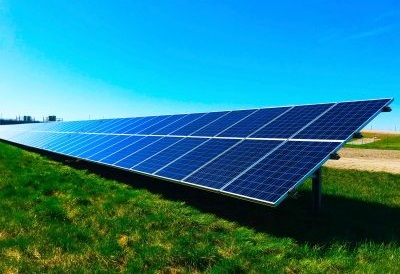Energy
How has Covid-19 affected the renewable energy sector?
published by
Fran Puddefoot

Britain has this week reached two months of coal free electricity generation, according to the National Grid. This is the longest period without burning coal to generate power since the industrial revolution.
The record-breaking achievement comes soon after UK solar generation reached an all-time peak of 9.68GW in April, meeting almost 30 per cent of UK electricity demand.
The milestones demonstrate how much our energy system has transformed over the last 10 years, which has been accelerated by the Covid-19 emergency.
As the UK enters the summer months, solar generation is experiencing a natural surge. The seasonal peak may be enhanced this year by lower levels of pollution as a result of the Covid-19 lockdown, thus creating clearer conditions for radiation reaching solar panels.
The percentage of renewables in the mix will have increased as the International Energy Agency (IEA) reports a daily reduction in electricity demand of at least 15 per cent in countries such as France, Italy, Spain and the United Kingdom since lockdown measures began, thus allowing power grids to heighten shares of wind and solar energy. It is fossil energy, particularly coal, that has been switched off to accommodate the downturn in demand.
Despite this reduction in demand for electricity, in the first quarter of 2020, global use of renewable energy in all sectors increased by 1.5 per cent relative to the first quarter of 2019. Furthermore, renewable electricity generation has increased globally by almost 3 per cent, which is largely due to the completion of new wind and solar PV projects.
On a national level, the UK has witnessed an increase in the number of new renewable energy projects applying for planning permission, which reached a four-year high in 2019. Last year, a total of 269 planning applications for new wind, solar and bioenergy projects were submitted, a 75 per cent increase since 2016. This is reflective of the national efforts to cut carbon emissions and reach the UK’s climate goals.
Working with the Bluefield Solar Income Fund (BSIF) during 2019, Savills assisted a programme of extending planning permissions on operational solar farms, in each case by a further 15 years. BSIF’s programme across a portfolio of 25 of its assets had by the end of 2019 achieved planning permission for 171.5MWp with a further 44.1MWp being progressed. To date there is a 100 per cent success record with the planning applications. Carbon savings are estimated in excess of 50,000 tonnes per year for each of the additional 15 years consented.
Looking ahead, recovery from the Covid-19 emergency may well accelerate established decarbonisation trends. The consequences would not only be more solar and offshore wind generation, but also other improvements in the means by which energy is captured, stored, and supplied to customers.
Demand for electricity will grow to facilitate electrification of transport, heating and industry, and so increasing percentage shares for renewables will further increase the need for new low carbon power projects. The changes in transport will themselves mean new and different types of road and rail infrastructure. This is a fascinating time to be planning for infrastructure.
Source: Rob Asquith, Savills Energy, June 2020
prev
Lifestyle
How to pick a calming colour scheme
Articles
Has life in lockdown released your inner DIY-er?
Next
Subscribe to our newsletter